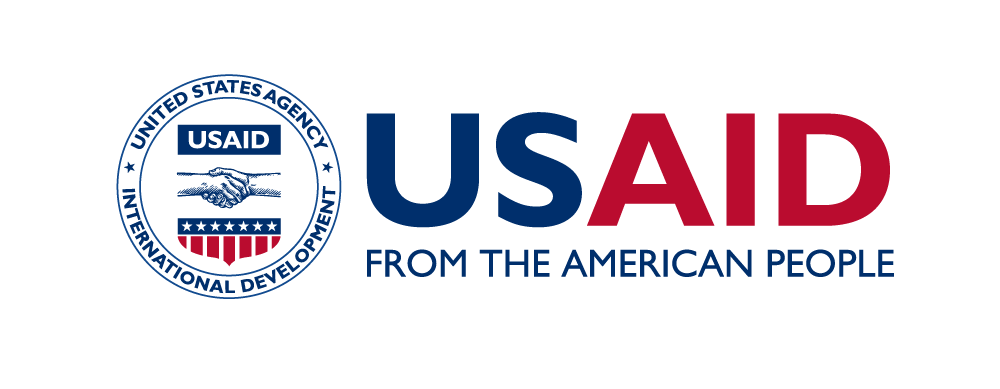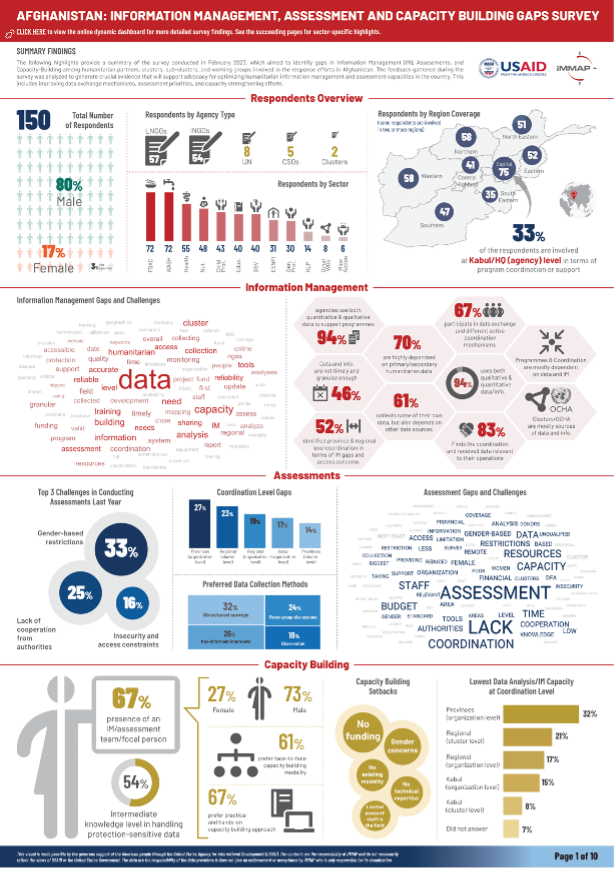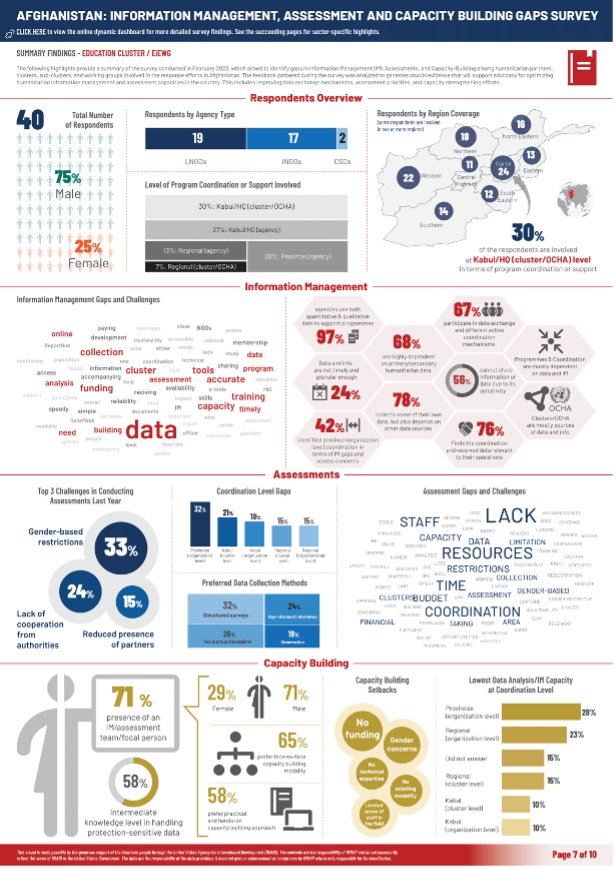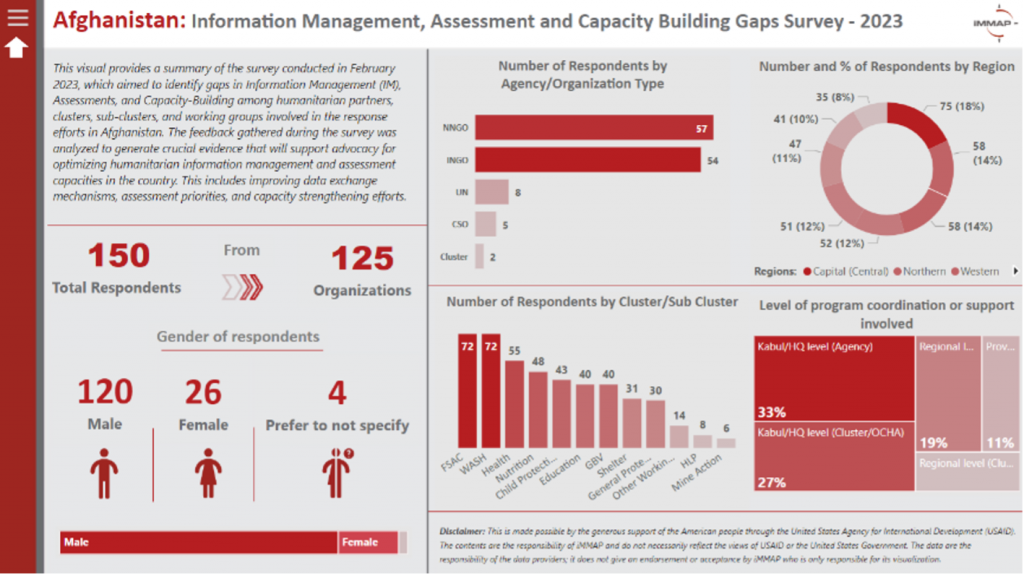For the past 40 years, Afghanistan has experienced a continuous state of warfare, a struggling economy, and recurring natural disasters such as droughts. As a result, the nation, which heavily relies on agriculture fall into an unprecedented humanitarian crisis. As of March 2023, 229 aid organizations are providing life-saving assistance to 28.3 million Afghans across 401 districts in the country. These partner organizations' expertise and knowledge are crucial in effectively reaching those in need. A survey conducted by iMMAP Inc. Afghanistan revealed existing gaps in Information Management (IM), assessment, and capacity-building efforts among these organizations.
Assessing the Information Management Gaps in Afghanistan's Humanitarian Response
A recent survey conducted by iMMAP Inc. Afghanistan reveals significant gaps in Information Management (IM) capacities among partner organizations responding to the humanitarian crisis.
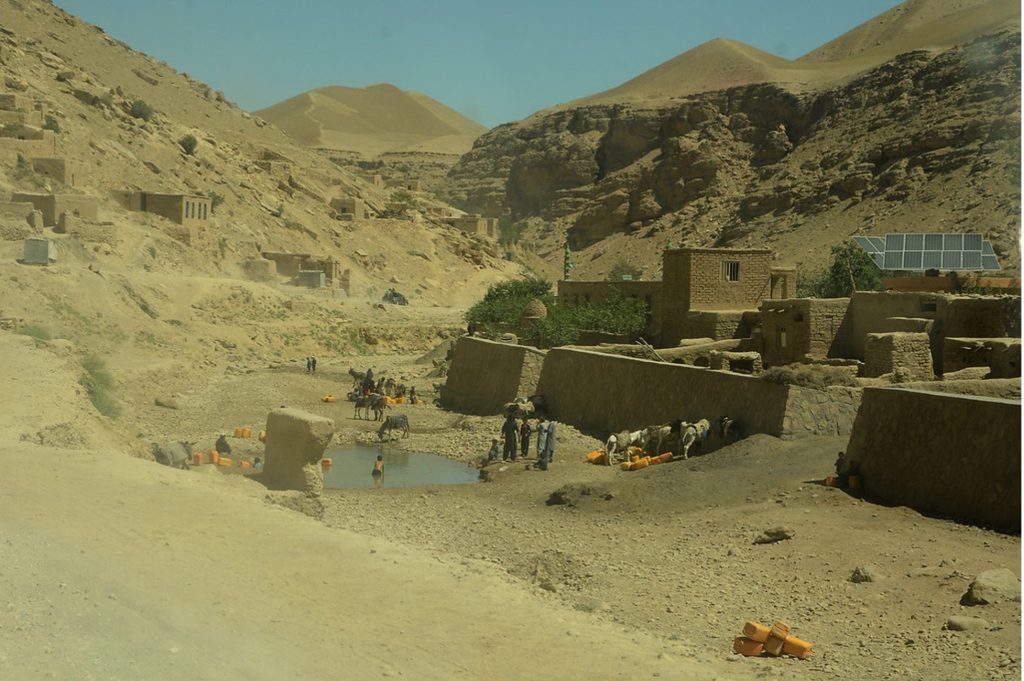
Residents collect water in a nearly dry riverbed between Badghis and Hirat province. Photo: OCHA / Philippe Kropf
In February 2023, iMMAP Inc. initiated a sector-wide survey in Afghanistan's humanitarian sector to identify and address gaps in IM, Assessments, and Capacity Building. 125 partner organizations from 34 provinces across Afghanistan responded to the survey.
The survey provided a rich and insightful dataset, in which 150 humanitarian professionals (120 men, 26 women) from 125 organizations—comprising 57 local NGOs, 54 international NGOs, 8 UN agencies, 5 civil society organizations, and 2 clusters—participating from the capital, Kabul, and eight regions of the country.
A 10-pager static dashboard highlighting key outputs of the survey.
The primary aim was to pinpoint and enhance areas that needed improvement in IM and assessment capacities among the humanitarian partners, clusters, subclusters, and working groups involved in the response efforts. This evaluation comprehensively assessed capacities at national, regional, and provincial levels, ensuring a deep understanding of the context and needs. iMMAP Inc. Afghanistan analyzed survey results, highlighting the need to improve humanitarian IM capabilities, enhance data exchange, and bolster capacity-building nationwide.
Assessment key insights
Nearly half of our survey respondents, 46%, reported a common worry: they feel the data they get is not detailed or fast enough. The effectiveness of their environmental initiatives and programmatic activities relies heavily on accurate and up-to-date data. Without it, their ability to monitor progress, assess impacts, and adapt strategies is considerably compromised.
When it comes to data collection methods, respondents lean towards using a blend of surveys and focus groups. This combination allows them to collect both quantitative and qualitative data effectively, further enhancing their decision-making processes.
The survey reveals that Kabul has significantly higher IM capacity at both cluster levels with 8% IM gaps and organizational with 15% gaps compared to the organizations at the provincial level with 32% IM gaps and regional cluster level with 21%. This suggests an existing demand for need-driven capacity-building efforts for organizations at regional and provincial levels.
About 67% of respondents prefer a practical, hands-on capacity-building approach while 61% of respondents favor in-person training sessions to facilitate effective knowledge transfer and interaction among participants.
"Low data volume and a lack of coordination is a major challenge in monitoring and assessment activities, and it can significantly reduce the overall effectiveness of the assessment processes."
Based on the survey responses, iMMAP Inc. Afghanistan developed a comprehensive and concise ten-page static dashboard. The dashboard provides an overview of the country's humanitarian landscape related to the survey and summarizes the highlights for each sector, including CP AoR, Education, ESN-FI, FSAC, GBV-SC, Protection, Health, Nutrition, and WASH. Additionally, iMMAP Inc. Afghanistan created an interactive filterable visualization that allows partners to further drill into the survey results and explore more detailed information.
Interactive dashboard helping users to further analyze and understand the survey insights.
"As the team create the interactive version of the survey results, our aim is to change numbers and words into dynamic graphics that tell a clear story. This helps our partners see what's going well and where things need to get better. It guides them in deciding where to put their focus and resources. We can then sit down together and figure out how to address gaps and make the most of opportunities."
By disseminating these dashboards and interactive visualization to the respondents, iMMAP Inc. ensures that valuable insights are shared with the relevant stakeholders and is working hard to fill these gaps and challenges by lending its expertise and building the capacity of partners. Also, this dissemination facilitates a better understanding of the survey findings and encourages collaborative efforts toward improving IM and assessment capacities in the country.
About iMMAP Inc. Afghanistan
iMMAP Inc. is an international not-for-profit organization. Funded by USAID, iMMAP has been actively operating in Afghanistan since 2007, delivering IM products and services to key partners in disaster risk reduction and humanitarian response. For more information, contact: rep-afghanistan@immap.org

